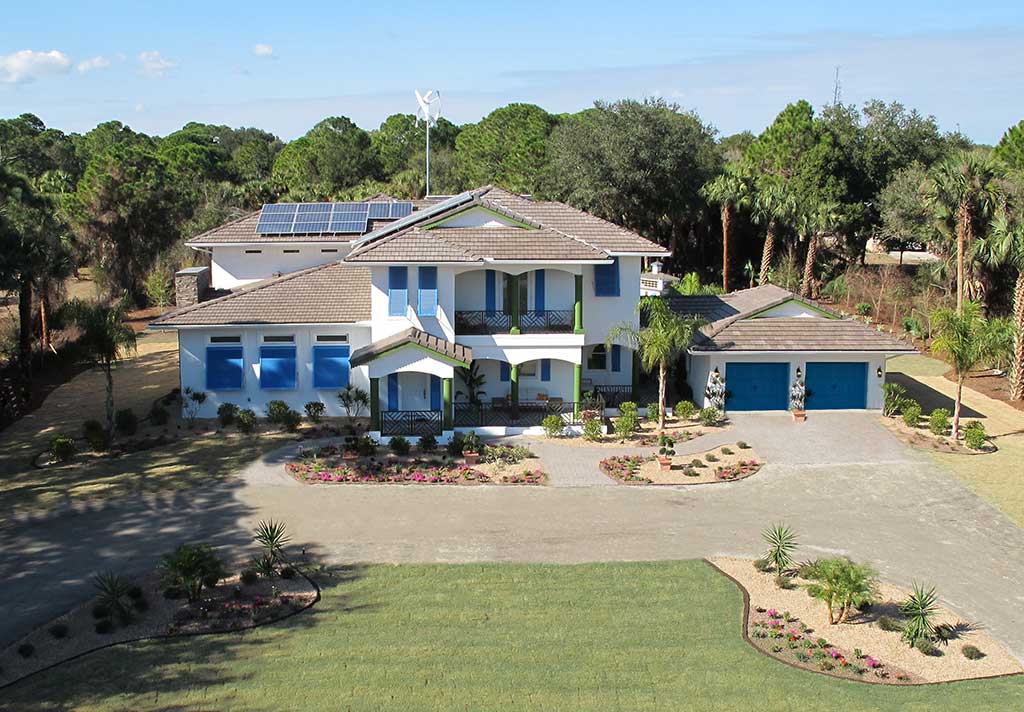Households start feeding solar power into national grid
Zimbabwean households generating rooftop solar energy have started feeding their excess power onto the main grid under the net metering arrangement, a development some analysts say could further boost the adoption of solar.
The Zimbabwe Electricity Transmission and Distribution Company (ZETDC), a unit of ZESA Holdings, said it has connected several households generating excess solar energy onto the grid and was already processing more applications.
Already, solar installations are gaining momentum in Zimbabwe, largely driven by shortages of power and a lack of investments in grid extension by the power utility.
The Government has also been encouraging the use of solar through incentives in a bid to boost power supplies and meet its renewable energy target of 2 100 megawatts by 2025.
ZETDC introduced the net metering programme in 2019, a scheme where households and businesses generating solar energy can feed excess power into the grid.
Those who feed excess power to the grid will be able to get back 80 percent of their energy.
ZETDC acting managing director, Engineer Howard Choga, told Business Weekly they had connected several households onto the main grid and the focus was now on big producers.
“We have several households feeding electricity into the grid under the net metering scheme,” said Eng Choga. “We are now trying to get into bigger solar energy producers.”
Some of the big corporates that have invested in solar energy include Old Mutual, cement producer, PPC, Blanket gold mine, Schweppes Beverages and Nhimbe Fresh.
According to a preliminary report on housing characteristics and living conditions in the 2022 Population and Housing Census, nearly 30 percent of the households in Zimbabwe are now using off-grid electricity, mainly solar. The total number of people using off-grid power stood at about 1,1 million, almost a third of the households, with 78,7 percent in rural areas. Thirty-four percent of the households use grid electricity while 38 percent do not have access to power.
Mashonaland East Province had the highest number of households using off-grid grid electricity, followed by Masvingo, Manicaland, Midlands and Mashonaland West.
Analysts say the failure by ZESA to invest in grid extension infrastructure and generation expansion, has led to people, especially in the rural areas investing in off-grid, particularly solar.
Those in the countryside, however, may also not benefit from the net metering arrangement due to lack on transmission infrastructure.
In addition, ZESA is also failing to connect new customers due to viability challenges. There are several new urban communities that are not connected to the grid and many households are resorting to solar systems for heating and lighting.
ZESA executive chairman, Dr Sydney Gata, said the power utility was struggling to connect about 320 000 households as a result of financial constraints.
“It is very unfortunate that we have a backlog of 320 000 new applications but we have no capacity,” Dr Gata said.
Off-grid electricity service provision – initially for residential customers beyond the grid through the pay-as-you-go business model – is becoming an enabling mechanism for a host of other goods and services that customers are willing to pay for, most of which require basic electricity service, according to the Wood Mackenzie study.
Zimbabwe has already removed duties from solar-energy-related projects while the Government was supporting the production of rooftop water heaters and promoting their benefits.
The use of the technology should reduce household energy consumption by 20-40 percent.
“This will enable solar producers to feed more power onto the grid,” said energy analyst Lenon Madzamba. He suggested that net metering alone might not propel more investments in solar energy given huge costs involved in the installation of such facilities.
Madzamba proposed a model where the Government through a state agency could mobilise funding through a grant and make a bulk purchase of solar equipment.
“Beneficiaries can then pay the money through selling excess power say for three years,” said Madzamba. “After repaying, the beneficiary will then own the whole system.
“It is also a way of empowering communities and boost the country’s renewable capacity.”
Nhimbe chief executive, Dr Edwin Moyo, said in an interview that while the metering scheme was a positive step in the right direction, selling excess to the Southern African Power Pool would help incentivise more companies to invest in solar energy.
“Offloading excess power to ZESA will not really encourage corporates to invest in solar because they will not get much,” said Dr Moyo, whose company generates 1,9 MW at its horticultural facility in Marondera, about 100 km east of Harare.
“A model where the corporates would be allowed to sell power to SAPP would ensure that corporates get payment for their excess power in foreign currency,” added Dr Moyo. “That will work as an incentive to encourage more corporates to invest in solar.”-ebusinessweekly










